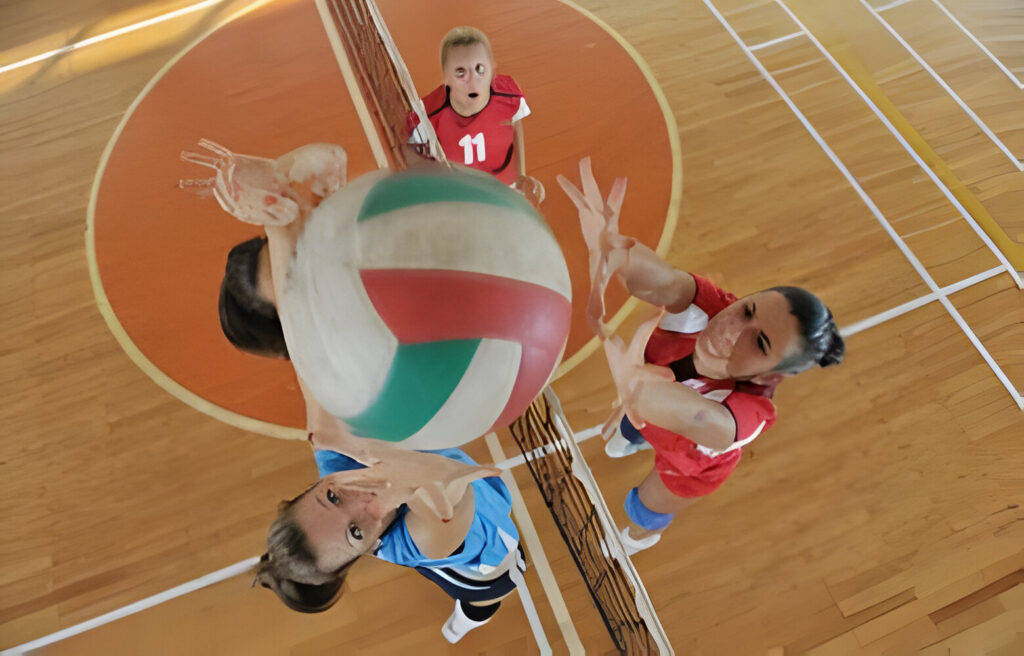Have you ever watched a beach volleyball match and wondered about the ease with which players seem to switch sides? If so, you’re not alone. This curiosity unveils a layer of strategy and physical prowess intrinsic to the sport. In essence, the process of changing sides as a beach volleyball player is nuanced, blending skill, tactics, and adaptability. But, to give you a slight idea right off the bat, it’s not just about physical movement across the sand; it’s about adjusting to different environmental conditions and maintaining team synergy.
Understanding The Basics
Before diving deeper, let’s get a lay of the land. Beach volleyball is not just a casual game played under the sun for leisure. It’s a competitive sport, often played to 21 in sets one and two, and if necessary, a tiebreaker set is played to 15. Each point, whether it’s securing the ball over the net or making sure your serve is unreturnable, counts towards victory. The beach version of the game places a premium on skills such as how effectively a player can hit the ball, blocks the ball, or ensures the ball touches the opposing side’s territory without a return.

One fundamental rule that stands out in beach volleyball is the requirement to switch sides after every multiple of seven points in the first two sets and every multiple of five points in the tiebreaker. This rule is crucial for ensuring fairness, as it mitigates the advantages or disadvantages caused by external factors like the sun, wind, and even the slope of the sand.
The Dynamics of Changing Sides
Now, to the crux of the matter: How easy is it to change sides as a beach volleyball player? At a glance, it seems straightforward—players simply move to the opposite side of the court. However, this action is more than a physical transition; it’s a mental and strategic reset. Players must quickly adapt to the new perspective and conditions on the other side, maintain focus, and recalibrate their game plan. This adaptability is what separates the novices from the pros in beach volleyball.

The Physical Aspect
From a physical standpoint, moving across the sand requires agility and endurance. Unlike indoor volleyball, beach volleyball involves playing on a softer, uneven surface that can be challenging to navigate. This means players must have excellent control over their movements to effectively return the ball or set up a play. Additionally, the act of switching sides allows players a brief moment to catch their breath and prepare for the next rally, making stamina a key factor in sustained performance.
The Mental Game
Mentally, changing sides as a beach volleyball player demands quick thinking and versatility. Players must be able to instantly assess the conditions on the new side—such as the direction of the sun and wind—and adjust their strategies accordingly. This might mean altering their serving technique, repositioning for better defense, or communicating changes in play calls with their partner. The ability to remain composed and adaptable during these transitions is crucial for maintaining a competitive edge.

Strategy and Teamwork
Strategically, each side switch is an opportunity to gain an advantage. Players discuss tactics, share observations about their opponents’ weaknesses, and plan their approach for the upcoming points. This collaborative aspect is pivotal, as beach volleyball is typically played in pairs. A seamless partnership, where both players are in sync, significantly enhances the team’s ability to capitalize on the change of sides.
Incorporating Semantic Keywords
Incorporating the intricacies of beach volleyball rules, such as the principle that the game is played to 15 in the tiebreaker set, underlines the importance of strategy in outdoor play. Mastery over how to contact the ball efficiently, understanding when a player blocks the ball, and ensuring the ball touches the right spot in the opponent’s court are all parts of the learning curve for a beach volleyball player. Moreover, the requirement to switch sides adds a layer of complexity, emphasizing the need for mental agility and physical prowess.
Conclusion
So, how easy is it to change sides as a beach volleyball player? While physically moving to the opposite side of the court is a straightforward task, the underlying adjustments in strategy, mental focus, and teamwork complicate this seemingly simple action. Players must be adept at reading the game’s flow, adapting to new conditions, and communicating effectively with their partners. These skills, honed through practice and experience, are what enable players to seamlessly navigate the challenge of switching sides, maintaining their performance, and striving for victory in the dynamic arena of beach volleyball.
In conclusion, changing sides is more than just a physical movement; it encapsulates the essence of beach volleyball—a sport that demands versatility, resilience, and strategic acumen. Whether you’re a seasoned volleyball player or a newcomer to the sport, understanding and mastering this aspect can profoundly impact your game, making each switch an opportunity to outplay your opponents and inch closer to success.
FAQs
Switching sides is strategic, requiring quick adaptation to new environmental conditions and maintaining teamwork.
Players switch sides after every multiple of seven points to ensure fair play and mitigate external factors.
Yes, adapting to different sides can impact performance, demanding versatility and strategic planning from the players.
Consider the sun’s position, wind direction, and sand condition to adjust strategies for effective outdoor play.
Beach volleyball rules mandate side changes at multiples of seven points for balance and to challenge player adaptability.




